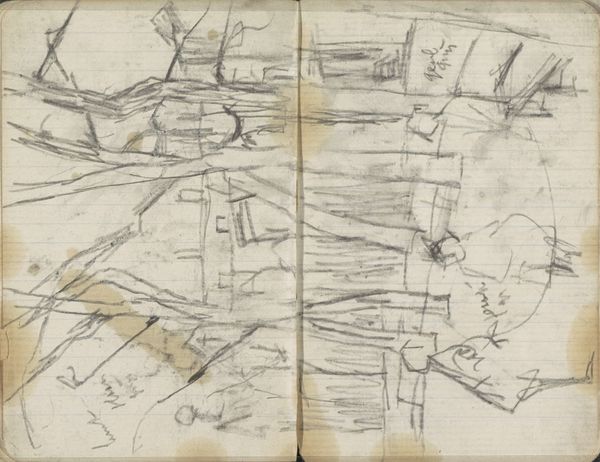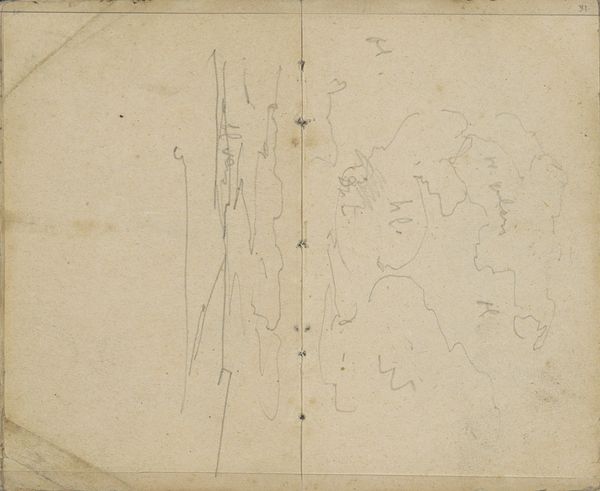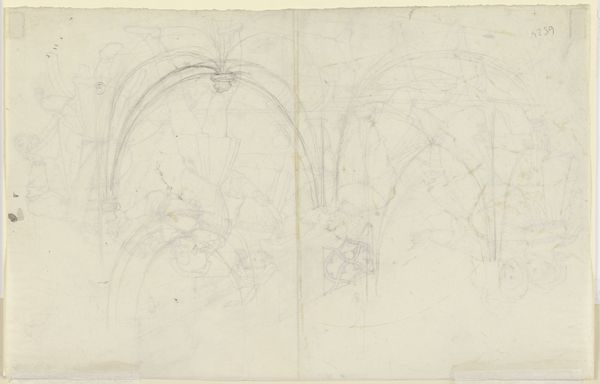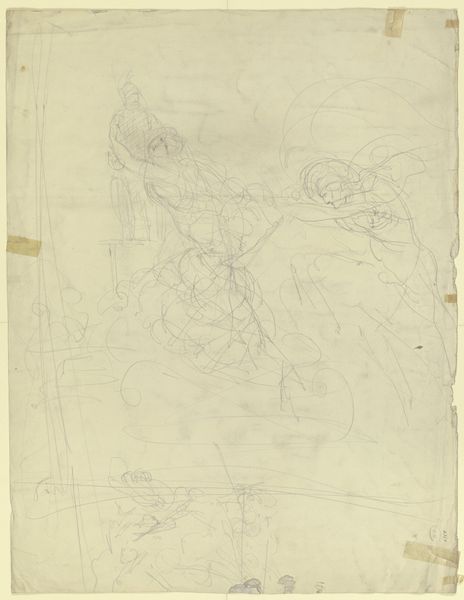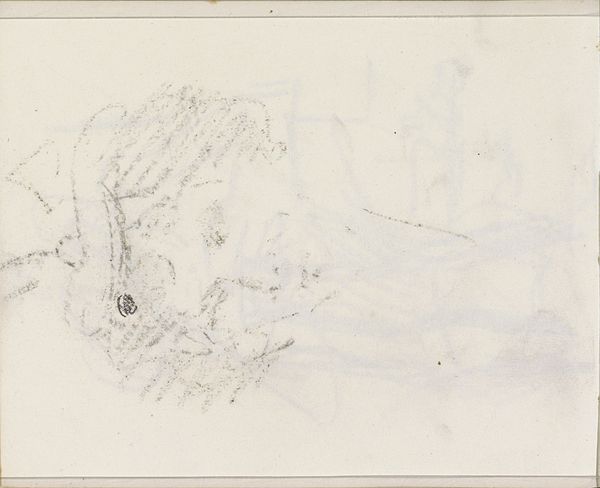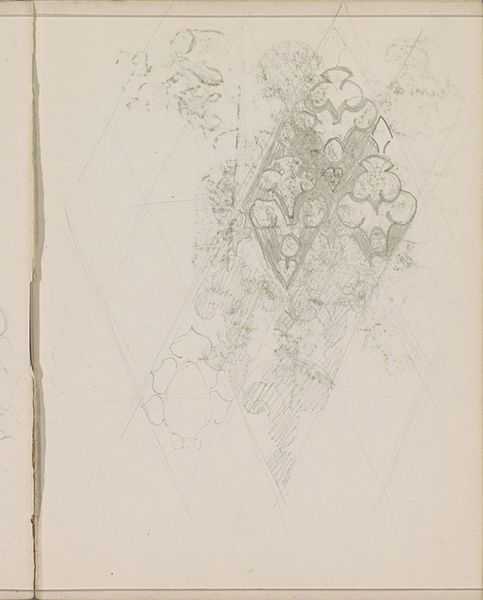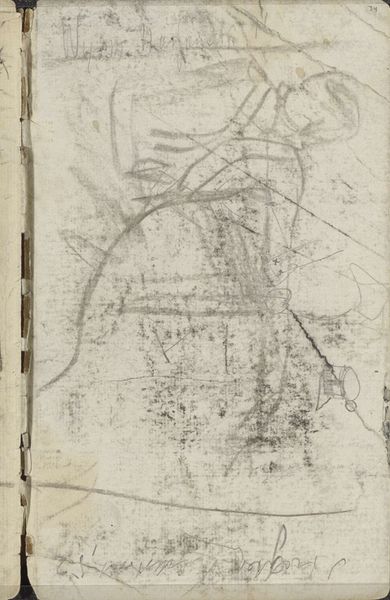
drawing, paper, pencil
#
drawing
#
amateur sketch
#
aged paper
#
toned paper
#
art-nouveau
#
quirky sketch
#
sketch book
#
incomplete sketchy
#
hand drawn type
#
paper
#
personal sketchbook
#
geometric
#
pencil
#
line
#
sketchbook drawing
#
sketchbook art
Copyright: Rijks Museum: Open Domain
Curator: Welcome. We're standing before a pencil drawing titled "Decoratief patroon" by Carel Adolph Lion Cachet, dating back to 1896. It's held here at the Rijksmuseum. Editor: My immediate impression is that this page feels intimate, almost like catching a glimpse into the artist's private thought process. It's sketchy and raw. Curator: Exactly. This piece is very evocative of the Art Nouveau style. I find the central geometric pattern, juxtaposed with the fluid, organic shapes surrounding it, particularly compelling. It feels like an exploration of order versus chaos, perhaps reflecting the era's own anxieties. Editor: For me, the aged paper itself is fascinating. You can see the way it has toned and stained over the years, giving the whole sketch a patina of history. It really highlights the fragility and the preciousness of the material. It also looks as though Cachet worked this directly into a sketchbook. Curator: That may be the case, yes. These repeating geometric patterns within the primary form could represent protection and containment, yet the loose rendering pushes past a confining frame. The linear quality suggests a search for underlying truth, typical of Art Nouveau. Editor: Thinking about it in terms of process, I wonder if this pattern was a practice piece? We're seeing the raw work behind Cachet's practice: line, repetition, pattern as labor. Curator: Very true. I believe it goes further. Looking at the whole composition of the open page—with figures reminiscent of sea creatures almost flowing across and out of this central diamond motif, there’s almost an invitation to see symbols breaking loose from pre-ordained forms, almost longing to breach set boundary. Editor: It’s fascinating how these disparate elements come together on a single sheet of paper, a kind of visual record of an artist’s experimentations. The page serves almost as a catalog of his artistic development in that particular period. Curator: Ultimately, for me, the work speaks to a larger cultural desire for finding harmony. Editor: And for me, its value comes from observing Cachet's raw labor.
Comments
No comments
Be the first to comment and join the conversation on the ultimate creative platform.
